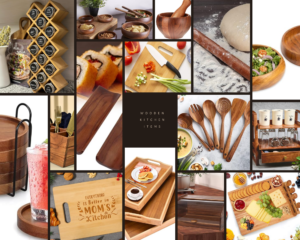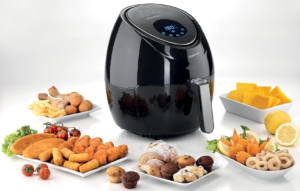A good knife is the backbone of any kitchen. Whether you’re a home cook or a professional chef, having the right set of knives can make meal prep easier, safer, and more enjoyable. But with so many options available, how do you choose the best knives for your cooking needs? In this guide, we’ll break down the different types of kitchen knives, what to look for when buying them, and where you can find the best ones online.
Why Choosing the Right Knife Matters
A sharp, well-balanced knife enhances your cutting precision and reduces the risk of accidents. The wrong knife, however, can be frustrating to use and even dangerous. Here are some key factors to consider when selecting the perfect knife:
- Blade material – Stainless steel, carbon steel, or ceramic?
- Handle comfort – Wood, plastic, or metal?
- Weight and balance – Does it feel right in your hand?
- Sharpness and durability – How often will it need sharpening?
- Purpose – What kind of cooking do you do most?
Essential Knives for Every Kitchen
While you can buy full knife sets, you only need a few essential knives to handle most kitchen tasks. Here are the must-have knives and their uses:
1. Chef’s Knife (8-10 inches)
A chef’s knife is the most versatile knife in any kitchen. It’s great for chopping, slicing, dicing, and mincing everything from vegetables to meat.
Recommended: WÜSTHOF Classic 8″ Chef’s Knife
2. Paring Knife (3-4 inches)
This small knife is perfect for peeling, trimming, and cutting small fruits and vegetables. It’s also handy for delicate tasks like deveining shrimp.
Recommended: Victorinox Fibrox Pro 3-Piece Knife Set
3. Serrated Bread Knife (8-10 inches)
A bread knife has a serrated edge, making it ideal for cutting through crusty bread, cakes, and even tomatoes without crushing them.
Recommended: Global G-2 Chef’s Knife with Sharpening Stone
4. Santoku Knife (5-7 inches)
A Santoku knife is a Japanese-style knife similar to a chef’s knife but with a thinner blade and better for precision slicing.
Recommended: Shun DM0702 Classic 7-Inch Santoku Knife
5. Boning Knife (5-7 inches)
If you often work with meat, a boning knife is useful for trimming fat, deboning chicken, and filleting fish.
Recommended: Victorinox Fibrox Pro 3-Piece Knife Set
Choosing the Right Knife Material
Each knife material has its pros and cons. Here’s a quick breakdown:
- Stainless Steel – Resistant to rust and easy to maintain, but may need frequent sharpening.
- Carbon Steel – Stays sharper longer but can rust if not properly maintained.
- Ceramic – Extremely sharp and lightweight, but brittle and prone to chipping.
Knife Handle Materials: What’s Best for You?
- Wood Handles – Stylish and comfortable, but need extra care to prevent damage.
- Plastic Handles – Easy to clean and lightweight but may not be as durable.
- Metal Handles – Durable and modern-looking, but can be heavy and slippery.
How to Take Care of Your Knives
To keep your knives in top shape, follow these care tips:
- Hand wash only – Avoid dishwashers to prevent dulling and rust.
- Use a cutting board – Preferably wood or plastic, as glass can dull the blade.
- Store properly – Use a knife block, magnetic strip, or blade guards.
- Sharpen regularly – Use a honing rod weekly and a professional sharpener when needed.
Where to Buy the Best Kitchen Knives
If you’re looking to invest in quality knives, check out these recommended brands:
- Wüsthof Classic Chef’s Knife – View on Amazon.ae
- Victorinox Fibrox Pro Knife Set – View on Amazon.ae
- Global G-2 Chef’s Knife – View on Amazon.ae
- Shun Classic Santoku Knife – View on Amazon.ae
Final Thoughts
Choosing the right kitchen knives depends on your cooking habits and preferences. If you invest in high-quality knives and take proper care of them, they can last a lifetime. Ready to upgrade your kitchen? Check out our top picks for the best cooking knives today!
[Disclaimer: This article contains affiliate links. If you purchase through these links, we may earn a small commission at no extra cost to you.]


